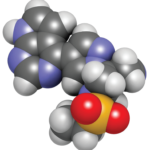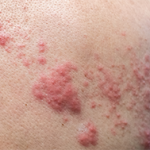 ACR CONVERGENCE 2022—Biologic disease-modifying anti-rheumatic drugs (bDMARDs) and targeted synthetic DMARDs (tsDMARDs) are widely used to treat patients with rheumatoid arthritis (RA). Despite their efficacy in controlling rheumatic disease activity, these treatments may increase the risk of infections.1 Tumor necrosis factor (TNF) inhibitors and Janus kinase (JAK) inhibitors carry a Boxed Warning in the package labeling regarding the risk of serious infection.2–9
ACR CONVERGENCE 2022—Biologic disease-modifying anti-rheumatic drugs (bDMARDs) and targeted synthetic DMARDs (tsDMARDs) are widely used to treat patients with rheumatoid arthritis (RA). Despite their efficacy in controlling rheumatic disease activity, these treatments may increase the risk of infections.1 Tumor necrosis factor (TNF) inhibitors and Janus kinase (JAK) inhibitors carry a Boxed Warning in the package labeling regarding the risk of serious infection.2–9
During ACR Convergence 2022, Se Rim Choi, MD, and PhD student in the Division of Rheumatology, Department of Internal Medicine, Seoul National University Hospital and Seoul National University College of Medicine, South Korea, presented data on the comparative risk of infection between JAK inhibitors and TNF inhibitors in patients with RA.10
Methods: This cohort study used the Korea National Health Insurance Service database of patients with RA, examining patients who initiated treatment with a JAK inhibitor or TNF inhibitor between 2009 and 2019. Patients were evaluated for infection, including serious bacterial infections, opportunistic infections and herpes zoster.
Propensity-score fine-stratification (PSS) based weighting was used to adjust for more than 60 baseline covariates (not defined). PSS is used to weight groups, making them more similar. Researchers estimated hazard ratios (HRs) and 95% confidence intervals (CIs) using Cox proportional hazard models.
The Results
Of the 2,967 patients who initiated JAK inhibitors and 13,152 patients who initiated TNF inhibitors, the study evaluated 2,963 patients who initiated JAK inhibitors and 5,169 patients who initiated TNF inhibitors. The mean follow-up was 1.16 years, with the most frequent infection being herpes zoster. The incidence rate per 100 person-years for herpes zoster was 11.54 for JAK inhibitor-treated patients and 4.88 for TNF inhibitor-treated patients.
Serious bacterial infections had an incidence rate of 1.39 per 100 person-years for JAK inhibitor-treated patients and 1.32 for TNF inhibitor-treated patients. Opportunistic infections were rare, with an incidence rate of 0.11 for JAK inhibitor-treated patients and 0.49 for TNF inhibitor-treated patients. The majority of opportunistic infections were tuberculosis, with an incidence rate of 0.12 for JAK inhibitor-treated patients and 0.49 for TNF inhibitor-treated patients.
The PSS-weighted HR [95% Cl] for individual infection types comparing patients taking JAK inhibitors with those taking TNF inhibitors was: 1) herpes zoster: 2.37 [95% Cl, 2.00–2.80]; 2) serious bacterial infections: 1.04 [95% CI, 0.71–1.52]; and 3) opportunistic infections: 0.25 [0.09–0.73]. The risk of being hospitalized with a herpes zoster infection was much greater for patients taking JAK inhibitors than for those taking TNF inhibitors, with an HR of 7.43 [3.91–14.11].


